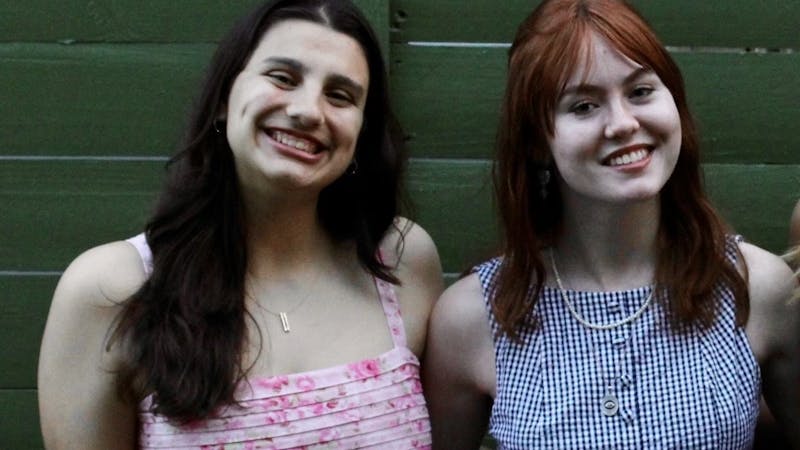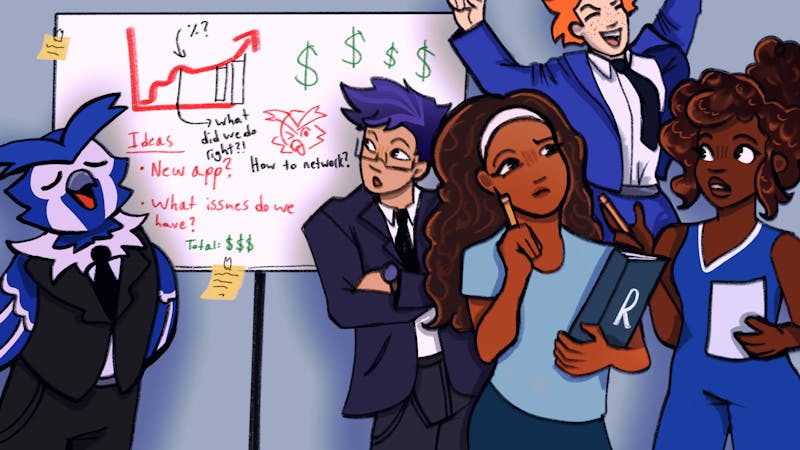‘Not too shabby’: Rice professors with high h-indices

Bryan Mendoza / Thresher
From pioneering new technologies to designing crucial teamwork models, Rice faculty members have gained renown in their fields. Though it can be difficult to quantify a researcher’s impact on an area of study, Rice professors have some of the highest h-indices in the nation.
The h-index, or Hirsch index, named after its inventor Jorge E. Hirsch, attempts to measure the impact of a researcher’s work by taking into account both the amount of times their work is cited in other papers and the amount of papers they’ve published. Ramamoorthy Ramesh, the executive vice president of research, said that the h-index presents a way to calculate the influence of research — though it does have its shortcomings.
“Either very controversial papers or very important papers will get large numbers of citations,” Ramesh said. “The negative to [the h-index] is you could have published a garbage paper [and] still get a lot of citations, but for the wrong reason … but overall what you will find out is that if you’re really doing good work people will read it, [and] people will cite.”
The typical range of h-indices varies from field to field based on the number of researchers, which affects how often a paper may be cited. In engineering fields with abundant resources and lots of researchers, a “good” score for full professors researching for 10 or more years falls between 50 and 60. In fields with fewer researchers such as social sciences and business, “good” h-indices range from 45 to 55. The h-index, Ramesh told the Thresher in a follow-up statement, is a function of the size of the field.
“You routinely see people in chemistry having h-indices of 150 or 200,” Ramesh said. “But in physics, if you have an h-index of even 50, it’s not too shabby. And if you’re going to social sciences and the humanities, the number of people involved [in the field’s overall research] is small.”
Pulickel Ajayan, a professor of engineering and chair of the department of materials science and nanoengineering, has the highest h-index at Rice with a score of 221 as of July 2023.
“I always wanted to be an academic even from my undergraduate days. You know, teach and research,” Ajayan said. “After my Ph.D. [I spent] quite a lot of time in Japan and Europe.
“In Japan, I was kind of lucky in the sense that I was at the right time in the right place. The discovery of carbon nanotubes, which was the early nanotechnology excitement, happened while I was in that lab,” Ajayan continued. “That gave me even more interest and excitement to continue in nanomaterials and nanotechnology.”
Ajayan said that he was able to publish prolifically as a result of his wide range of research topics and his interest in problem-solving.
“I think the scientific problems and the pursuit of those problems keep me engaged. In that sense, I think I could go on forever,” Ajayan said.
Uptal Dholakia, a professor of marketing at the Jones Graduate School of Business with an h-index of 56, said that he stays engaged by working on multiple topics.
“I believe in doing a lot of different things together, so I can jump from one thing to another and come back and so on … so I don’t get fixated on just one thing. That helps to avoid burnout for me,” Dholakia said.
Unlike Ajayan, Dholakia said he hadn’t originally intended to become an academic, having worked various marketing jobs before getting his Ph.D.
“I’m the first person in my family to have a Ph.D. or even to go to college,” Dholakia said. “The thing about academia … is that you can study new challenges and problems … and have autonomy, which is not to be found in companies. [That’s] what kept me in academia all these years.”
Eduardo Salas, an organizational psychology professor with an h-index of 185, started his career designing team training systems for the U.S. Navy in Orlando, Fla., after which he began publishing his findings about team effectiveness.
“I never thought I would be an academic,” Salas said. “I have this interest in having an impact in people’s lives. It was not a big plan. It was, ‘Let’s collect data as robust as possible, and get insights from that data about how we improve performance.’”
Salas, who received the American Psychological Foundation Gold Medal Award for Impact in Psychology last August, said that helping others by doing field work motivated him in his research.
“In order to help these people, you have to understand their context … [and] embed yourself in it somewhat,” Salas said. “The interesting thing is that when you go and see how these people perform and what they do, you can say, I can help you, I can do something.”
K.C. Nicolaou, a professor of chemistry who has an h-index of 157, said that his primary focus throughout his career was on teaching and his research.
Nicolaou discovered a love for the subject with the encouragement of his teacher when attending high school in Cyprus.
“I fell in love with the field and the teacher because he gave me so much encouragement,” Nicolaou said. “For him to be calling on me so many times [in class], I felt that I was good at it … that was the beginning with me. At 16 years old I decided to become a chemist.”
Nicolaou followed his interests to England and throughout the United States, where he focused his energies on his research in total synthesis and on cultivating his students, to which end he wrote his autobiography “The Peripatetic: Chasing the Molecules of Nature.”
“My motto became from that time, which I tell my students today, discover your talent and follow with passion,” Nicolaou said. “I’m here today because some teachers led me through, and also by focus, discipline and hard work.”
[Feb. 16, 2024 6:16 p.m.] This article was updated with a statement from Ramamoorthy Ramesh clarifying the differences in h-indices across fields.
More from The Rice Thresher

Letter from the editors’ desk: Journalism is a community practice
First of all, we want to thank y’all for picking up the paper, reading our stories and answering our questions all the time. We want to inform students, staff and the community about what is happening at Rice, and the only way to do that is by hearing from you. Talk to us, email us, submit tips on our website, write an opinion piece; however you want to communicate, we always want to know what matters to you.

12 things to know about Rice Athletics
The Owls are members of the American Conference, previously called the American Athletic Conference. The football program competes within the NCAA Division I Football Bowl Subdivision. Across campus, over 500 student-athletes currently compete in 14 varsity sports, with the 15th sport—women’s golf—to play its inaugural season in Fall 2026.


Please note All comments are eligible for publication by The Rice Thresher.